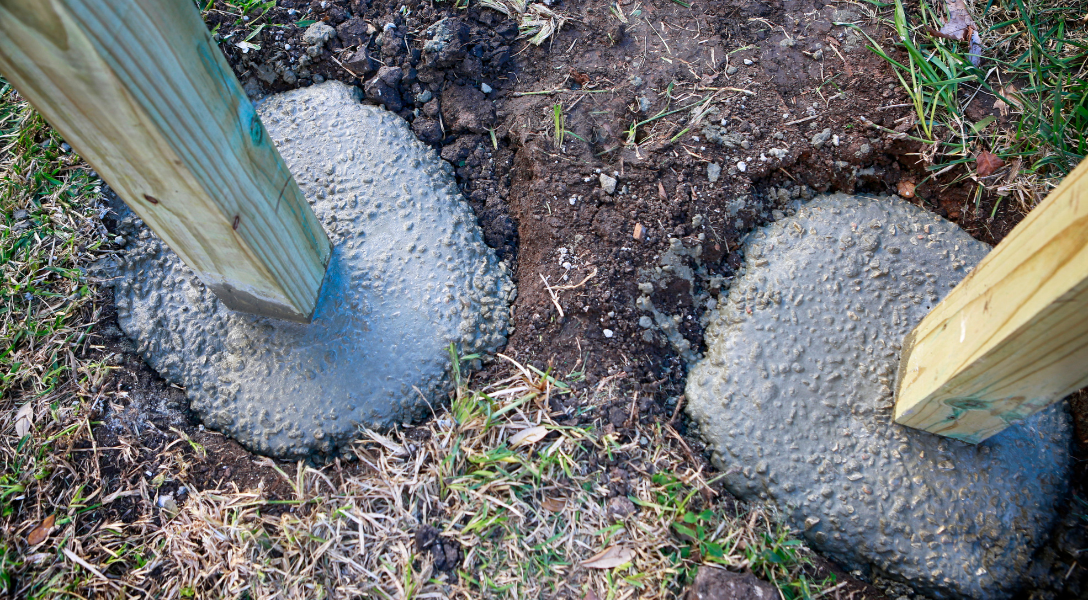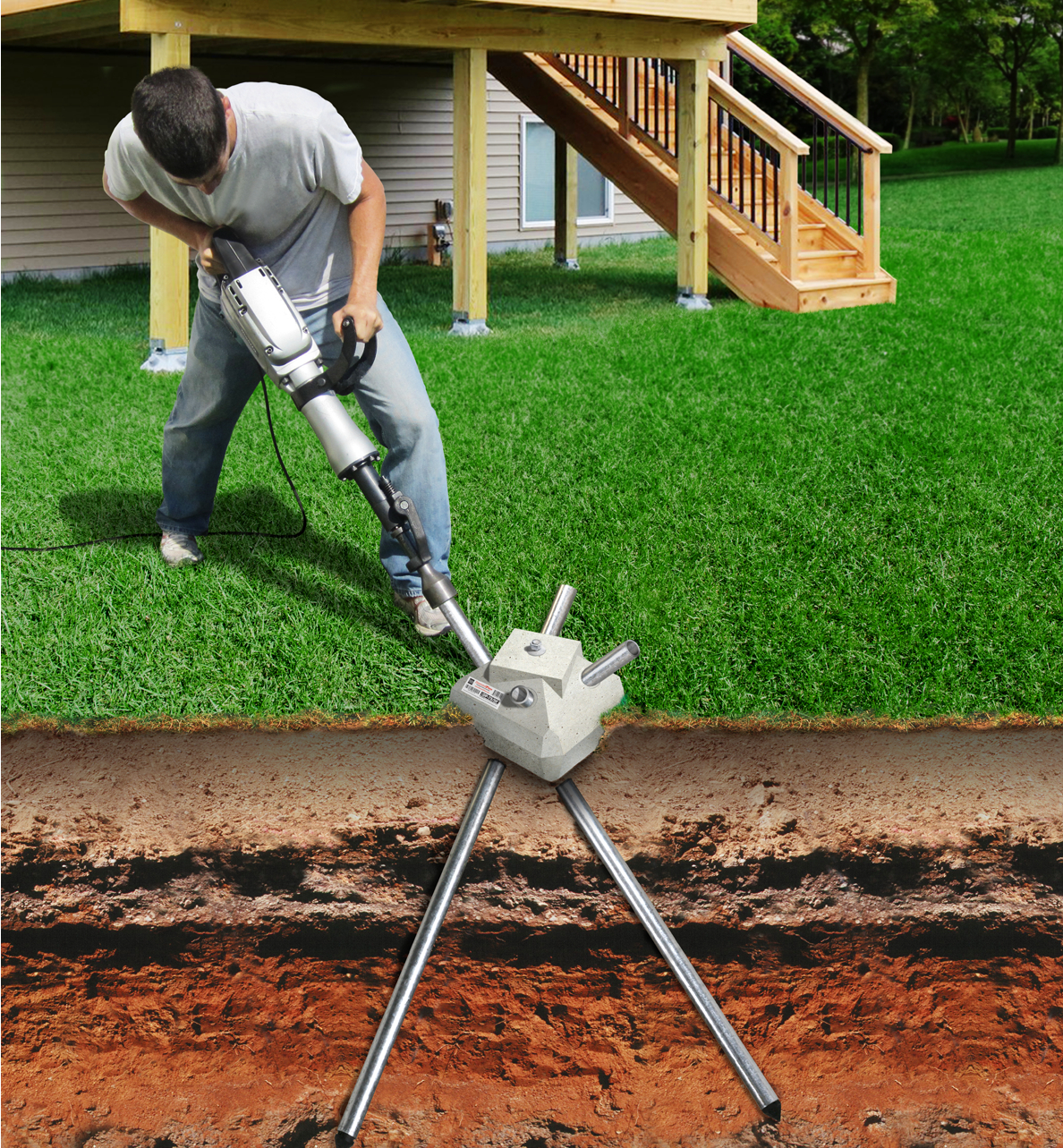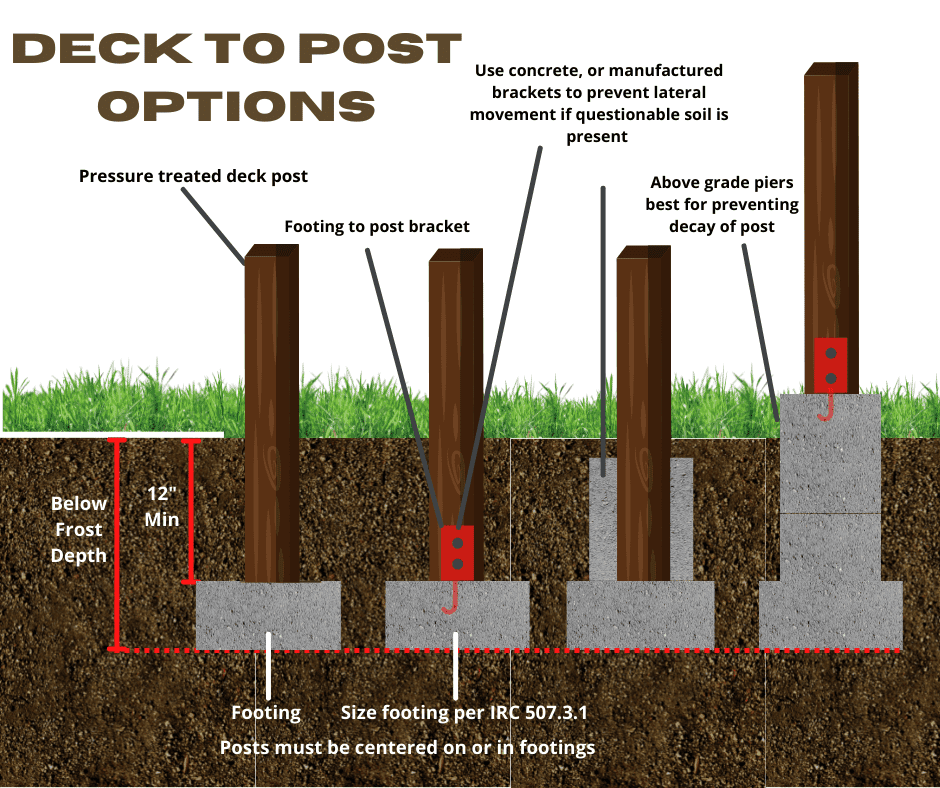Professional Tips for Setting Up Deck Footings to Assistance Your Outdoor Space
When it concerns developing a deck, one of the most vital components to consider is the setup of correct grounds. These grounds are the structure upon which your outside room will certainly rest, providing stability and support for years ahead. However exactly what does it take to set up deck footings appropriately? In this conversation, we will certainly check out skilled suggestions and methods that can aid make certain a effective and sturdy deck installment. From picking the best sort of grounds to avoiding usual mistakes, we will certainly supply you with the expertise and insights you need to with confidence start your deck-building trip. So, allow's dive right in and uncover the trick to a lasting and solid exterior room.
Importance of Proper Deck Grounds
Correct deck grounds are important for making sure the stability and long life of your exterior space. When constructing a deck, it is essential to take note of the structure on which it will certainly relax. Deck footings supply the required support for the whole framework and help distribute the weight evenly - Deck Footings. Without strong and correctly installed grounds, your deck may become unpredictable, causing security risks and pricey repair services.

In addition to stability, appropriate deck grounds additionally add to the durability of your outdoor space (Deck Footings). Grounds that are designed and created to endure the elements and dirt problems in your area will certainly assist stop the deck from clearing up or shifting with time. By making certain the grounds are properly sized and mounted, you can reduce the threat of damage to the deck framework, prolonging its life-span and decreasing the need for expensive repairs or substitutes

Choosing the Right Type of Footings
When selecting the suitable type of grounds for your deck, it is essential to think about variables such as dirt problems, neighborhood building regulations, and the general design of your outdoor space. The kind of footing you select will play an essential duty in guaranteeing the stability and durability of your deck.
One typical kind of ground is the concrete ground. Concrete footings are appropriate for the majority of soil conditions and offer outstanding assistance for decks.
In many cases, you might need to utilize specialized grounds, such as stack grounds or deep foundations, if you are constructing a multi-level or huge deck. These grounds are created to disperse the weight of the deck over a larger area, making certain stability and protecting against sinking or working out.
Prior to choosing a kind of footing, it is necessary to speak with local building ordinance and policies to guarantee conformity. Additionally, consider the layout and meant use of your outside space. Aspects such as the size, shape, and load-bearing demands of your deck will affect the sort of footing that is most ideal.
Preparing the Ground for Footing Installment
To appropriately prepare the ground for footing installment, it is essential to assess the dirt problems and take required actions to guarantee security and durability of the deck. The first action is to dig deep into the location where the footings will be mounted. The depth of the excavation will certainly rely on the frost line in your area and the details demands of the deck design. It is crucial to get rid of any kind of plants, rocks, or particles from the excavation to make certain a solid foundation.
Once the location has been excavated, the next action is to compact the dirt. This can be done utilizing a plate compactor or by utilizing a hand tamper. Condensing the dirt helps to get rid of any spaces or air pockets, which can lead to clearing up and instability in time.
After condensing the dirt, it is essential to lay a layer of crushed rock or smashed rock at the end of the excavation. This will certainly give drainage and aid to stop water from merging around the grounds, which can lead to erosion and instability.
Step-by-Step Guide to Setting Up Deck Footings
After properly preparing the ground for footing installment, the following action is to start the procedure of installing deck grounds. This detailed guide will give you with a clear understanding of how official site to install deck footings for your outdoor space.
Figure out the place: Begin by noting the settings of the deck grounds utilizing risks and string. Make sure that the areas straighten with the layout and format of your deck.
Dig the openings: Utilize a blog post opening miner or an auger to dig the holes for the footings. The deepness and diameter of the openings should be in conformity with local building codes and the details requirements of your deck click here for info style.
Level the openings: Utilize a level to make sure that the openings are dug to the correct deepness and are level with each other. (Deck Footings)
Include crushed rock: Location a layer of gravel at the bottom of each opening to boost drain and avoid the wood from rotting.
Put the grounds: Put the footings right into the openings, making sure they are level and plumb. Make use of a degree and a measuring tape to ensure precision.
Protect the footings: Put concrete into the holes around the grounds, loading them to the top. Utilize a message degree to make sure the footings continue to be degree as the concrete sets.
Allow time for healing: Let the concrete cure according to the manufacturer's guidelines before proceeding with the deck construction.
Usual Errors to Prevent During Footing Installment
One essential aspect to consider throughout the installation of deck footings is staying clear of typical mistakes that can jeopardize the stability and long life of your outdoor room. While deck footings might look like a uncomplicated and straightforward part of the building process, neglecting particular elements can bring about pricey repair services and potential security risks down the line.

Additionally, ignoring to install correct drain measures can trigger water to accumulate around the grounds, leading to rot, decay, and the ultimate weakening of the deck's foundation. In addition, using the incorrect kind of footing material or falling short to properly safeguard the footings can jeopardize their architectural integrity.
To stay clear of these mistakes, it is necessary to speak with a specialist or follow industry standards to guarantee correct footing setup. By doing so, you can guarantee the security and longevity of your outside room, supplying a secure and satisfying atmosphere for several years to come.
Conclusion
Finally, installing correct deck footings is essential for the security and longevity of your exterior room. By choosing the best sort of grounds and adequately preparing the ground, you can guarantee a strong foundation for your deck. Following a detailed overview and staying clear of typical mistakes throughout footing installation will certainly further enhance the durability and security of your deck.
Appropriate deck footings are important for making sure the stability and longevity of your outdoor room. The grounds offer as a connection between the deck and the ground, permitting the weight of the deck and its owners to be spread uniformly into the soil.One common kind of ground is the concrete footing. Put the grounds: Put the footings right into the openings, making sure they are degree and plumb. Protect the footings: Put concrete right into the holes around the footings, loading them see here now to the top.